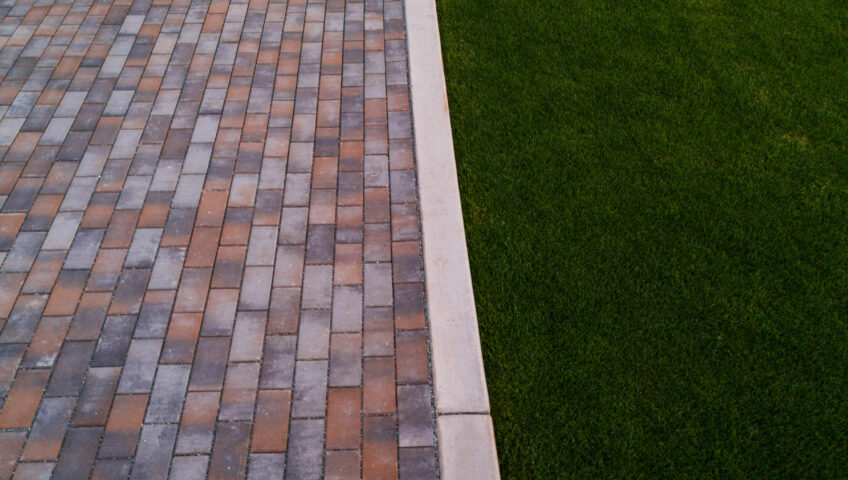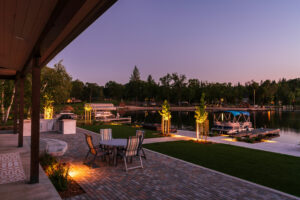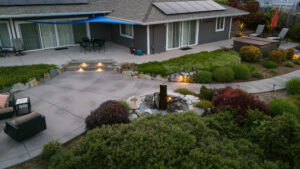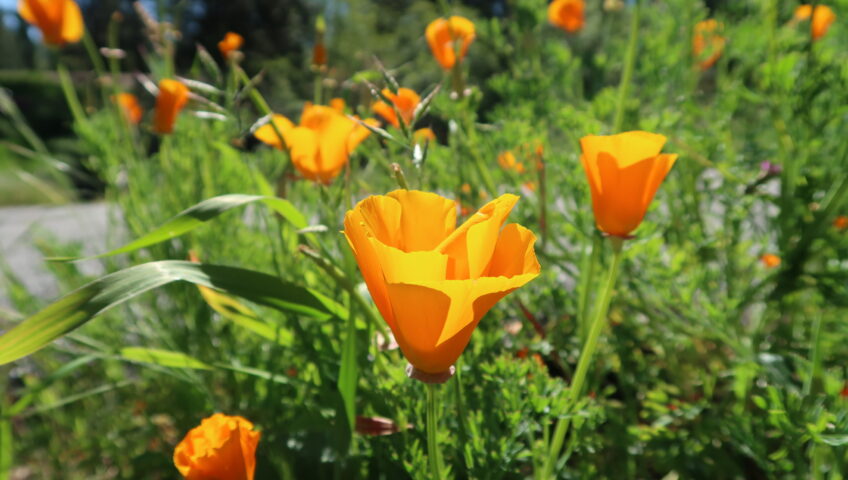
The Art of Hardscaping: Elevate Your Outdoor Space with Pavers, Concrete, and Natural Stone
When learning how to transform your yard into a functional and aesthetically pleasing space, it's essential to incorporate hardscaping elements. Hardscaping refers to the non-living components of landscaping, such as pavers, concrete, and natural stone, which add structure and durability to your outdoor areas. Let's explore the benefits of hardscaping and how various materials and techniques can elevate your landscaping.
Durability and Low Maintenance
Hardscaping elements like pavers, concrete, and natural stone are incredibly durable and require minimal maintenance. Unlike grass and plants that need regular watering, mowing, and care, hardscaping materials withstand the elements and maintain their appearance with little effort.
Enhanced Aesthetics
Hardscaping adds visual interest and texture to your yard. With a wide range of materials, colors, and patterns available, you can create unique designs that reflect your personal style and complement the natural beauty of your surroundings.
Increased Property Value
Investing in quality hardscaping can significantly boost your property's value. A well-designed patio, walkway, or driveway not only enhances curb appeal but also adds functional outdoor living space that potential buyers will appreciate.
Improved Functionality
Hardscaping creates defined areas for various activities, such as dining, lounging, and entertaining. It also helps manage water flow and drainage, preventing erosion and water damage to your property.
Pavers: Patterns, Colors, and Versatility
Pavers are a popular hardscaping choice due to their versatility and aesthetic appeal. Available in various materials such as concrete, brick, and stone, pavers can be arranged in countless patterns and color combinations to suit any design preference.



Concrete Flatwork: Stamped, Broom, Band, and Color
Concrete is a versatile and durable material ideal for driveways, patios, and walkways. With various finishing techniques, you can achieve different textures and appearances to suit your design vision.
Stamped Concrete
Stamped concrete mimics the look of natural stone, brick, or tile by imprinting patterns onto the surface before it sets. This technique allows you to enjoy the elegance of high-end materials at a fraction of the cost.
Banding and Coloring
Adding bands of contrasting color or texture to your concrete flatwork can create visual borders and accentuate different areas of your yard. Integral coloring mixes pigment directly into the concrete, ensuring long-lasting color that won't fade over time.





Flagstone Patios and Stepping Stones
Flagstone is a natural stone that offers a rustic, organic look perfect for patios and stepping stones. Its irregular shapes and earthy tones create a natural, cohesive flow throughout your landscape.
Setting Options
Sand: Setting flagstone in sand is a flexible and cost-effective method that allows for easy adjustments and repairs. This technique works well for informal, garden pathways.
Mortar: For a more permanent and stable installation, flagstones can be set in mortar. This method provides a solid base and is ideal for patios and high-traffic areas.
Conclusion
Incorporating hardscaping elements like pavers, concrete, and natural stone into your landscaping not only enhances the visual appeal of your outdoor space but also adds functionality and value. Whether you're creating a patio, a walkway, or a driveway, the possibilities are endless with the wide range of materials, patterns, and finishes available. Embrace the art of hardscaping and transform your yard into a stunning, low-maintenance haven that you can enjoy for years to come.















